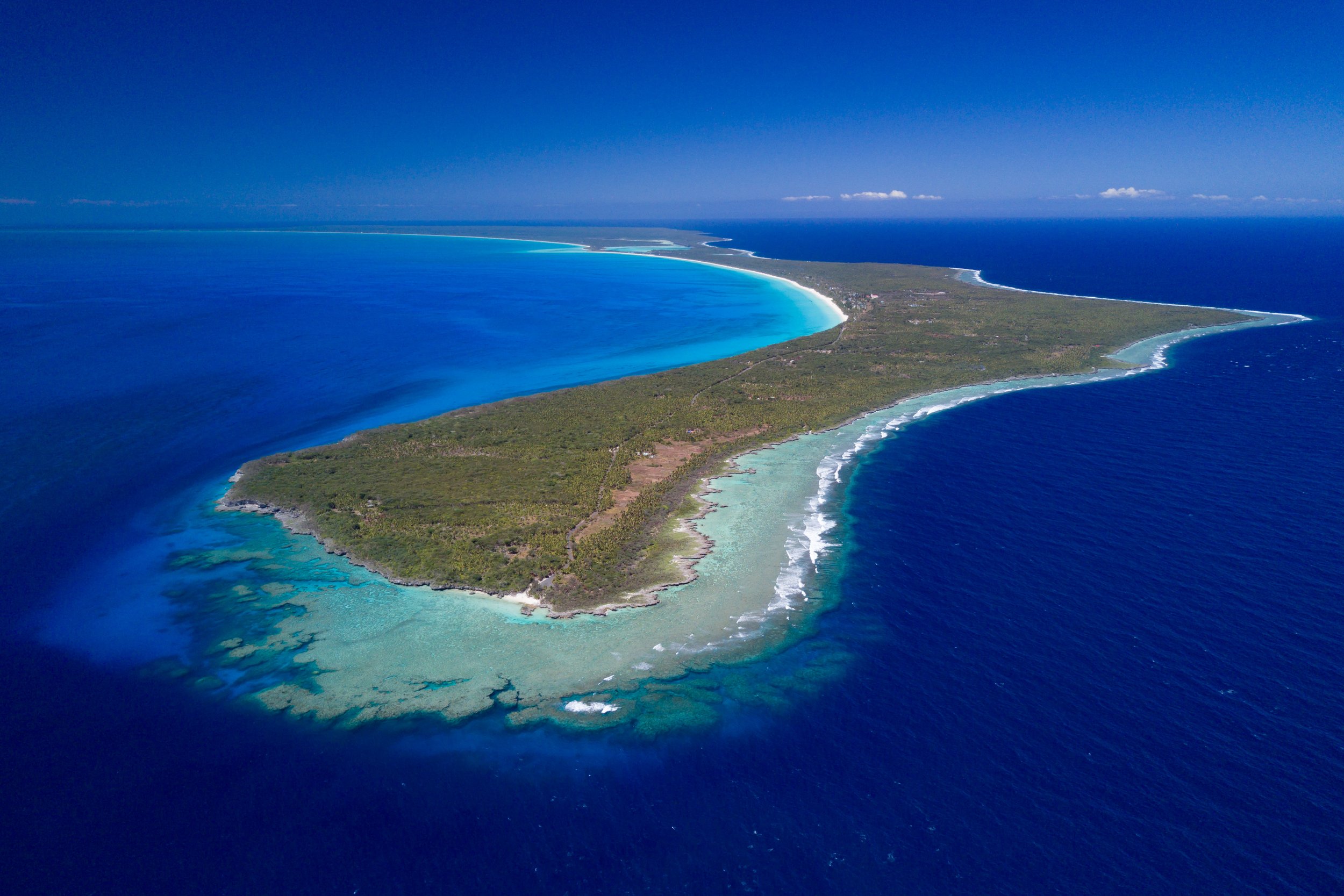Let’s get to know the New Caledonia Manta Initiative!
July 2024
The New Caledonia Manta Initiative, affiliated with the Manta Trust since 2015, has shown remarkable growth and progress over the years. We are excited to take you behind the scenes of this impressive project, with project leader Hugo Laussace ready to share all the details…
‘New Caledonia, renowned for its breathtaking reefs listed as a UNESCO World Heritage Site and the creation of the Coral Sea Natural Park, is committed to a significant management and conservation initiative encompassing emblematic species. Among these, manta rays stand out as potential umbrella species, pivotal in catalyzing the conservation of habitats and ecosystems. Additionally, manta rays present substantial economic potential for ecotourism, as evidenced by successful programs in various global locations. Sharing knowledge at a regional level is crucial for a comprehensive understanding of the issues related to manta rays, aiming for integrated management of these species. For instance, understanding their migration scales is essential to evaluate the effectiveness of existing protection measures.
The incredible New Caledonia coral reefs from the air. © New Caledonia Manta Initiative.
Established in 2015 by the Manta Trust charity in collaboration with Conservation International and Aquarium des Lagons, the New Caledonia Manta Initiative aims to enhance knowledge about New Caledonia's manta rays and promote their conservation. This collaborative effort involves local authorities, professionals (such as dive centers), and the community (including volunteers).
The New Caledonia research team. © Shawn Heinrichs.
New Caledonia's manta populations have recently been the focus of extensive research. A study conducted between 2017 and 2020, which incorporated 1,741 photo-identifications from citizen science, identified 391 individual manta rays from. This research revealed a widespread distribution of the species across many sites in the archipelago, with minimal connectivity between these sites—only 5.4% of individuals were observed at more than one site. The study also highlighted strong site fidelity, with a 52.2% re-sighting rate, and documented the world’s highest known proportion of melanistic manta rays (43%).
A melanistic manta ray. © New Caledonia Manta Initiative.
Furthermore, 44.8% of the manta rays had noticeable wounds or injuries, with 9.8% attributed to anthropogenic causes and 29.7% to attempted predation. These findings underscore the need to preserve the favorable conditions in New Caledonia as a reference for conservation.
A curious manta ray in New Caledonia. © Shawn Heinrichs.
Another crucial aspect of manta conservation is understanding their genetic structure. A study using genome-wide single nucleotide polymorphisms (SNPs) assessed the genetic structure and diversity of reef manta rays within New Caledonia and the broader western Pacific Ocean region. This research provided the first evidence of fine-scale genetic differentiation between three cleaning station aggregation sites, revealing that reef manta rays can form genetically distinct groups within a relatively small geographic range. These results emphasize the importance of considering genetic structure when designating management units for conservation.
Processing genetic samples in the lab. © New Caledonia Manta Initiative.
Satellite telemetry has provided insights into the spatial ecology and dispersal of reef manta rays in New Caledonia. By tagging 21 reef manta rays with pop-up satellite archival transmitting tags, researchers observed strong site fidelity and a preference for coastal waters. Long-distance migrations (>300 km) primarily occurred through coastal and shallow water paths.
Tagging a reef manta ray. © New Caledonia Manta Initiative.
The latest publication from the New Caledonia Manta Initiative delves into the population characteristics, genetic structure, and movement ecology of reef manta rays in New Caledonia. It underscores the need for tailored conservation strategies considering the particular genetic and ecological dynamics of these manta populations. The research highlights the importance of preserving the favorable conditions in New Caledonia as a benchmark for manta ray conservation globally.
An infographic about New Caledonia Manta Initiative’s latest publication. © New Caledonia Manta Initiative.
The New Caledonia Manta Initiative represents a vital effort in understanding and conserving manta ray populations. By combining local collaboration, cutting-edge research, and community involvement, this initiative is paving the way for effective conservation strategies that could serve as models for other regions. The continued study of manta rays in New Caledonia will provide valuable insights and reinforce the significance of protecting these majestic creatures and their habitats.
DR. HUGO LASSAUCE
Project Leader - New Caledonia Manta Initiative








